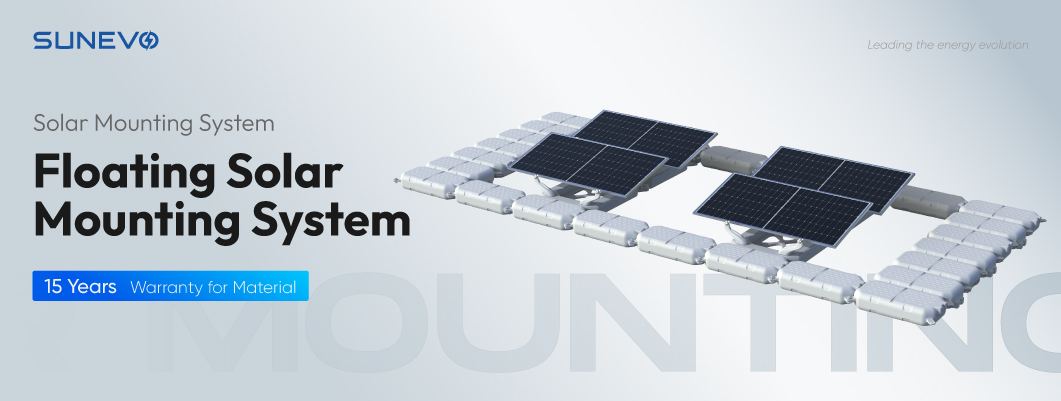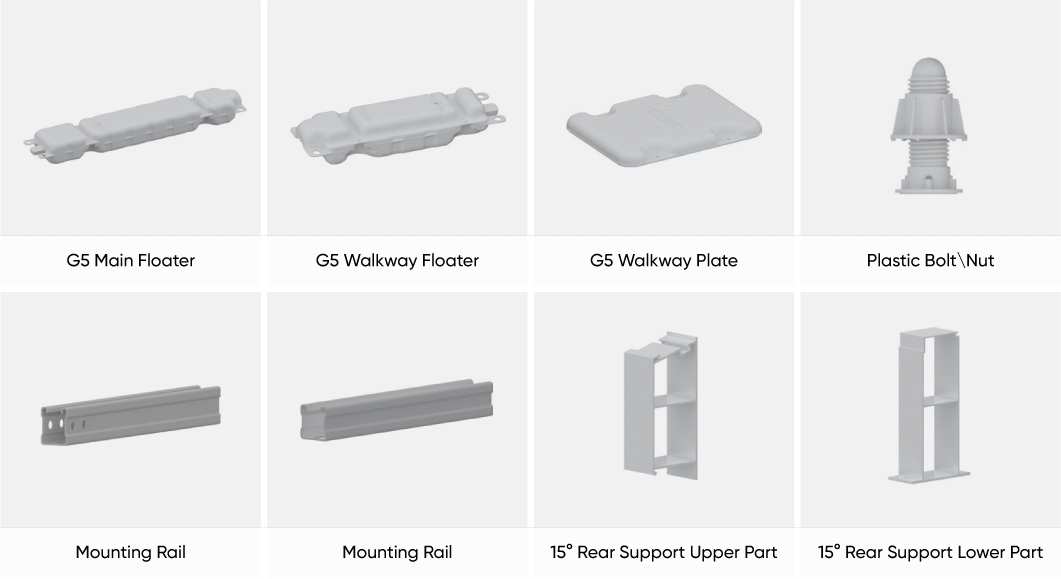The Floating Solar Mounting System, also known as the Floating Solar Rack System, is a specialized mounting solution designed for installing solar panels on water bodies such as ponds, lakes, or reservoirs. It allows the solar panels to float securely on the surface of the water, maximizing energy generation potential.
Brand:
SunEvoInstallation Application:
Floating Solar Rack SystemPV Module Layout:
LandscapeWind Load:
42m/s or CustomizedSnow Load:
1.3KN/m2 or CustomizedInclination:
CustomizedSunEvo Photovoltaic Power Energy Floating Panel Mounting Structures System
Solar floating rack system, also known as floating solar panel system, is a type of installation that allows solar panels to be mounted on bodies of water such as lakes, ponds, and reservoirs.

Technical Features of Floating Solar Mounting Systems:
| Product name | Floating Solar Mounting System |
| Installation Site |
Lake, Reservoir, Dam, Pond, Drinking Water area, Industrial West Pond etc. |
| Wind Load |
42m/s or Customized |
| Snow Load |
1.3KN/m2 or Customized |
| Applicable Solar Module |
Framed |
| Panel Layout |
Landscape |
| Material | HDPE, Zn-Al-Mg coating Steel, Aluminum alloy |

The system typically includes the following components:
--Floats: Buoyant modules made of high-density polyethylene or other suitable materials that provide buoyancy and support for the solar panel arrays.
--Support Structure: Framework constructed using corrosion-resistant materials such as galvanized steel or aluminum, which connects the floats and holds the solar panels securely in place.
--Anchoring System: Various anchoring methods like mooring lines, weight plates, or screw anchors used to stabilize the floating system and prevent it from drifting.

Installation of the Floating Solar Mounting System involves the following steps:
--Site Assessment: Analyze water body conditions, including depth, water quality, and environmental factors, to determine feasibility and suitability for installation.
--Design: Develop a layout plan based on the available space, solar panel capacity, and specific project requirements.
--Assembly: Assemble the floats, support structure, and anchoring system according to the design specifications.
--Panel Installation: Mount the solar panels onto the support structure, ensuring proper alignment and secure attachment.
--Electrical Connection: Connect the solar panels in series or parallel, and route the electrical wiring to an onshore power distribution system or energy storage facility.

Advantages Of Floating Solar Mounting Systems
Floating Solar Mounting Systems are suitable for installations in water-rich environments, offering several advantages:
--Efficient Land Use: Utilize the surface area of water bodies, allowing for the generation of renewable energy without consuming valuable land resources.
--Increased Energy Generation: The cooling effect of water helps maintain optimal operating temperatures, enhancing panel performance and overall energy output.
--Reduced Water Evaporation: By covering the water surface, the system helps reduce evaporation, conserving water resources.
--Environmental Benefits: Floating solar arrays minimize environmental impact, preserving aquatic ecosystems and reducing land disturbance.

Suitable Installation Environments Of Floating Solar Mounting Systems
To choose the most suitable Floating Solar Mounting System, factors to consider include project requirements, water body conditions, local regulations, and the reputable manufacturers in the industry.
It's crucial to assess the system's structural integrity, durability, corrosion resistance, and compatibility with the intended panel type, ensuring the system meets safety standards and project objectives.
